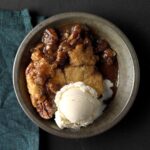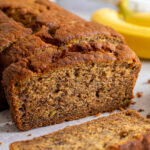Embark on a culinary adventure with this collection of nut-free and gluten-free bread recipes, designed for those with dietary restrictions. Imagine the warm, comforting aroma of freshly baked bread, now accessible to everyone, regardless of allergies. We’ll explore diverse textures – from the tangy delight of sourdough to the airy lightness of fluffy loaves and the hearty satisfaction of dense, rustic options. Each recipe offers detailed ingredient lists, highlighting substitutions to avoid common allergens, ensuring a safe and delicious baking experience.
This guide delves into the intricacies of gluten-free baking, providing step-by-step instructions, troubleshooting tips, and invaluable insights into ingredient selection and techniques. Learn how to navigate the challenges of gluten-free flours, achieve optimal rise and texture, and prevent common pitfalls. Discover the secrets to creating bread that’s not only allergy-friendly but also incredibly flavorful and satisfying.
Ingredient Focus
Creating delicious and safe nut-free and gluten-free bread requires a careful understanding of ingredient roles and potential challenges. This section delves into the key players in these allergy-friendly recipes, exploring alternatives and substitutions to achieve optimal texture and flavor. We will examine gluten-free flour blends, binding agents, and leavening agents, highlighting their individual contributions and how they interact to produce a successful loaf.
The success of nut-free and gluten-free bread hinges on the careful selection and combination of ingredients. Gluten-free flours, unlike their wheat-containing counterparts, lack the elasticity and structure provided by gluten. This necessitates the use of alternative binding agents and careful attention to hydration levels. Leavening agents play a crucial role in achieving the desired rise and texture, and choosing the right combination can significantly impact the final product.
Gluten-Free Flour Blends and Their Impact
Gluten-free flour blends are rarely composed of a single ingredient. Instead, they typically combine several different flours, starches, and fibers to mimic the properties of wheat flour as closely as possible. The most common components include rice flour, tapioca starch, potato starch, sorghum flour, and almond flour (ensure it is used in nut-free recipes). The specific blend significantly influences the bread’s texture and taste. A blend heavy in rice flour might result in a crumbly loaf, while one with a higher proportion of tapioca starch may produce a more moist and chewy texture. The addition of xanthan gum or guar gum, often included in pre-made blends, helps to improve the elasticity and binding of the dough. For instance, a blend of brown rice flour, tapioca starch, and potato starch might create a lighter, fluffier bread than a blend dominated by almond flour, which tends to result in a denser product.
Binding Agents: Creating Cohesion in Gluten-Free Dough
Because gluten is absent, binding agents are essential for holding the gluten-free bread dough together. These agents help to create structure and prevent the bread from crumbling. Xanthan gum and guar gum are commonly used, and they work by thickening the dough and improving its elasticity. Psyllium husk powder is another option, known for its water-absorbing properties. The amount of binding agent needed varies depending on the specific flour blend used. Too little, and the bread will be crumbly; too much, and it might become gummy or dense. For example, a recipe using a blend primarily of rice flour might require a larger amount of xanthan gum compared to a blend that already contains a significant amount of binding agents.
Leavening Agents: Achieving the Desired Rise
Leavening agents are crucial for creating a light and airy loaf. Baking powder and baking soda are common choices, often used in combination. Baking powder is a complete leavening agent, containing both an acid and a base, while baking soda requires an acidic ingredient in the recipe to activate. The type and quantity of leavening agent used directly influence the final texture and rise of the bread. Using too much leavening agent can result in a bread that is overly airy and potentially crumbly, while too little might lead to a dense and flat loaf. The correct balance depends on the recipe and the specific flour blend employed. For example, a recipe using a blend with a high starch content may require more leavening agent than a blend containing more protein-rich flours.
Common Challenges and Solutions in Gluten-Free Baking
Gluten-free baking often presents unique challenges. One common issue is achieving the proper moisture content. Gluten-free doughs can be quite dry and crumbly, often requiring more liquid than traditional doughs. Another frequent problem is the lack of elasticity, making it difficult to handle and shape the dough. Careful attention to the hydration level and the use of binding agents are key to overcoming these difficulties. Over-mixing the dough can also be detrimental, leading to a tough final product. Gentle handling and the use of a stand mixer on low speed are often recommended. Finally, gluten-free breads tend to dry out faster than wheat breads, so proper storage is essential to maintain freshness.
Troubleshooting Common Baking Issues

Gluten-free and nut-free baking presents unique challenges, often resulting in loaves that deviate from the desired texture and rise. Understanding the reasons behind these issues is crucial for achieving consistently delicious results. This section will address common problems and provide practical solutions to help you troubleshoot your allergy-friendly bread baking.
Ingredient ratios and baking techniques are paramount in gluten-free baking. The absence of gluten, which provides structure and elasticity in traditional bread, necessitates careful attention to the balance of starches, binding agents, and liquids. Incorrect ratios can lead to a variety of problems, from excessively dense loaves to crumbly textures and uneven rising. Similarly, improper mixing techniques or baking temperatures can significantly impact the final product. Altitude also plays a role, as air pressure affects the expansion of leavening agents.
Dense Bread
Dense bread often indicates insufficient leavening or excessive liquid. The lack of gluten’s natural elasticity means that gluten-free breads rely heavily on the expansion of leavening agents (like baking powder or yeast) for their rise. Insufficient leavening will result in a compact loaf. Conversely, too much liquid can overwhelm the binding agents, leading to a heavy, dense texture. To address this, check the freshness of your leavening agents and ensure you’re using the correct amount as specified in your recipe. Consider reducing the liquid slightly if your recipe seems too wet, and try adding a small amount of xanthan gum or another binding agent to help hold the structure together. A visual example of dense bread would be a loaf that is significantly shorter and heavier than expected, with a compact, almost clay-like interior.
Crumbly Texture
A crumbly texture in gluten-free bread often suggests insufficient binding agents or an imbalance of wet and dry ingredients. Gluten-free flours lack the cohesive properties of wheat flour, making them prone to crumbling. Xanthan gum, guar gum, or psyllium husk are commonly used to mimic the binding effect of gluten. Insufficient amounts of these agents will lead to a dry, crumbly result. Similarly, too much dry flour relative to liquid will create a similar effect. A crumbly loaf would appear dry and easily breaks apart, lacking the soft, airy interior of a well-baked loaf. The crumb structure would be coarse and irregular.
Uneven Rising
Uneven rising can stem from several factors, including inconsistent mixing, uneven oven temperature, or pockets of air trapped in the dough. Thorough mixing is crucial to ensure that all ingredients are evenly distributed, preventing pockets of flour or leavening that could inhibit proper rising. An oven that isn’t evenly heated can cause one side of the loaf to rise more than the other. Finally, insufficient kneading (or mixing for no-knead recipes) can trap air bubbles, resulting in uneven rising. A visually uneven loaf might rise more on one side, be taller in the center than the edges, or have visibly different densities in various sections.
Adapting Recipes for Different Ovens and Altitudes
Ovens vary in their heating capabilities, and altitude significantly impacts baking. Higher altitudes have lower air pressure, causing leavening agents to expand more rapidly. This can result in overly-risen or collapsed loaves. To compensate for oven variations, use an oven thermometer to ensure your oven is at the correct temperature. For higher altitudes, you may need to slightly reduce the amount of leavening agent in your recipe or increase the baking time to allow for slower expansion. You might also consider adding a tablespoon or two of additional flour to compensate for the increased expansion. For example, a recipe tested at sea level might need adjustments to the leavening and baking time if used at a high altitude like Denver, Colorado.
Baking delicious and safe bread for those with allergies is entirely achievable! This comprehensive guide has equipped you with the knowledge and recipes to confidently create a variety of nut-free and gluten-free breads. From understanding the roles of key ingredients to mastering techniques and troubleshooting common issues, you now possess the skills to produce breads that are not only allergy-friendly but also boast exceptional taste and texture. So, gather your ingredients, preheat your oven, and embark on this rewarding baking journey!
User Queries
Can I use xanthan gum in all recipes?
While xanthan gum is a common binder in gluten-free baking, its necessity varies depending on the specific flour blend used. Some blends already contain enough binding agents, rendering additional xanthan gum unnecessary and potentially affecting texture.
How long can I store gluten-free bread?
Gluten-free bread tends to dry out faster than traditional bread. Store it in an airtight container at room temperature for up to 3 days or freeze it for longer storage. Freezing maintains freshness remarkably well.
What if my bread doesn’t rise properly?
Insufficient rising could be due to several factors: incorrect leavening agent measurement, using an old leavening agent, improper mixing, or even oven temperature inconsistencies. Double-check your measurements and try again.
Are all gluten-free flour blends the same?
Absolutely not! Gluten-free flour blends vary significantly in their composition, affecting the final product’s texture and taste. Experimenting with different blends is key to finding your preferred results. Some blends may work better for certain recipes than others.


